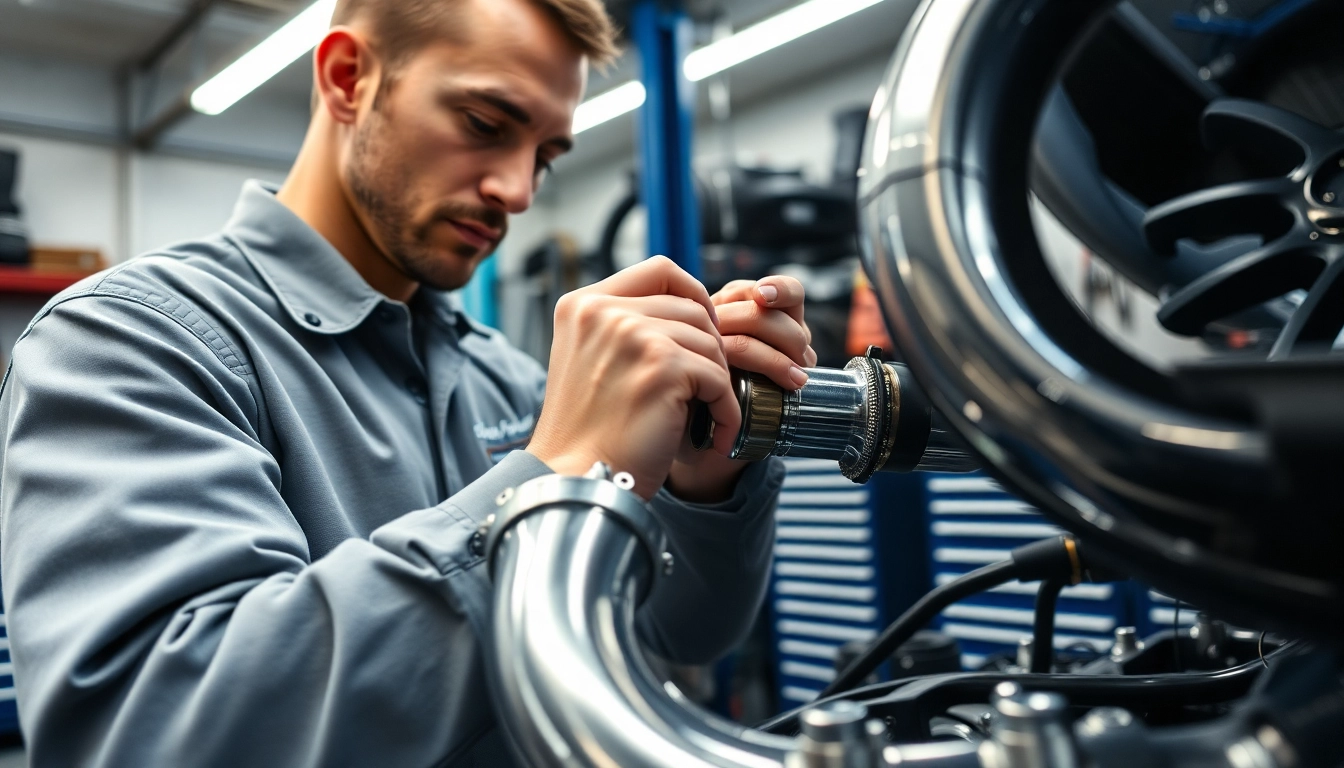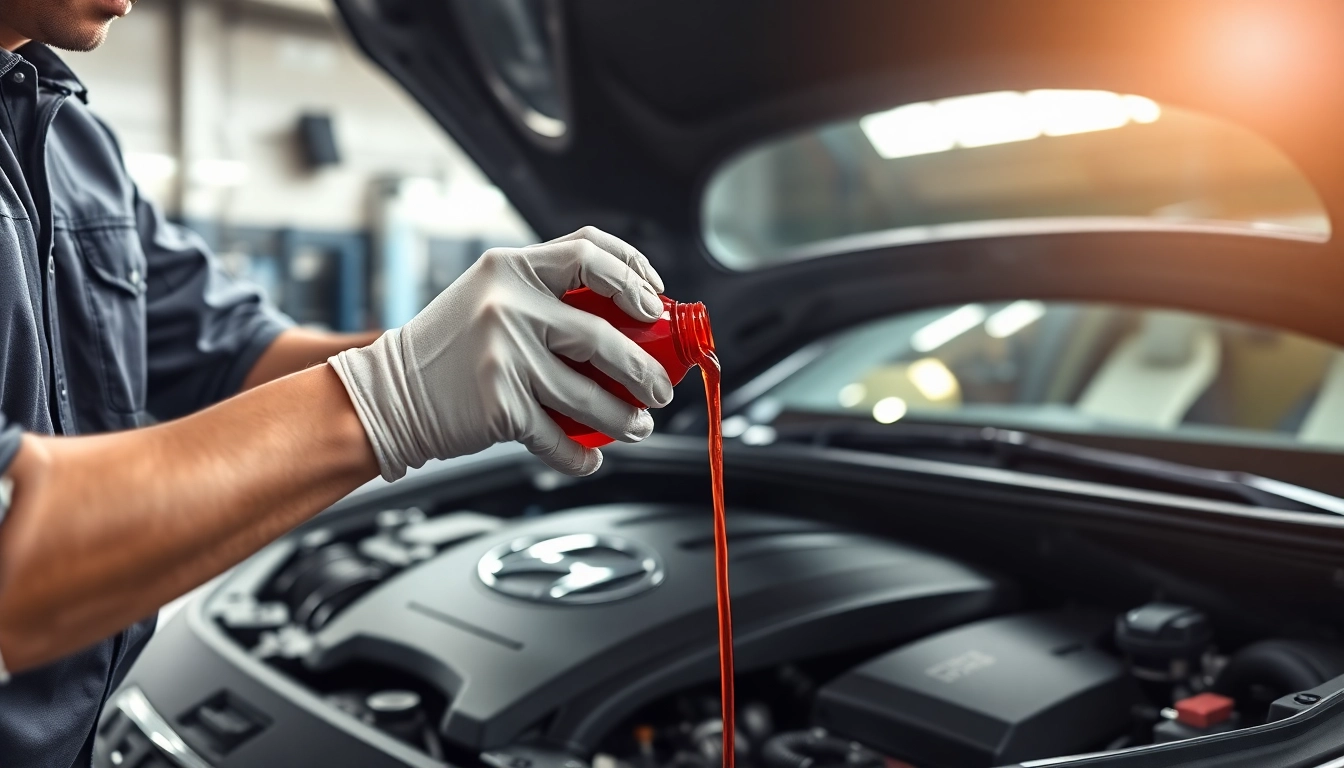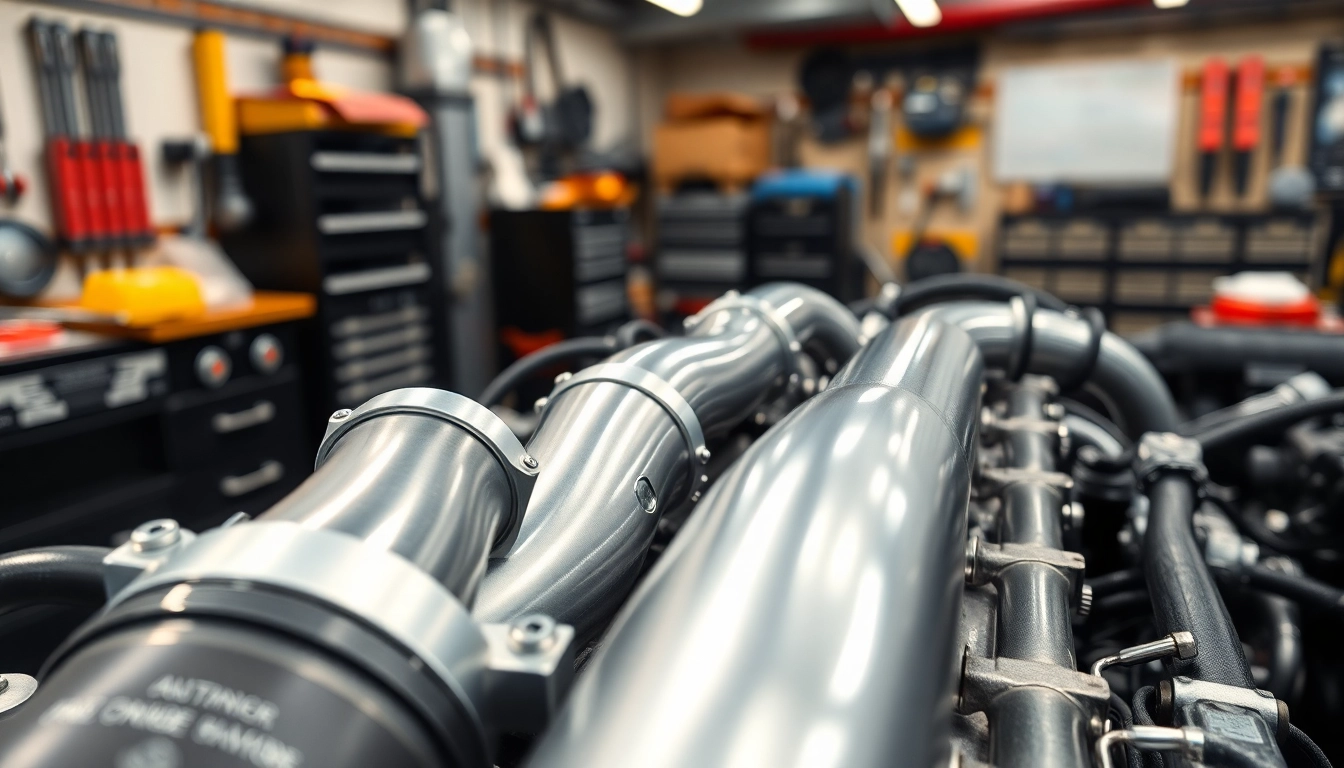Understanding Charge Piping
What is Charge Piping?
Charge piping is a crucial component in automotive forced induction systems, primarily found in turbocharged and supercharged vehicles. These pipes facilitate the movement of compressed air from the turbocharger or supercharger to the engine’s intake, playing a pivotal role in engine performance. Charge piping typically replaces the factory-installed system to improve airflow, efficiency, and reliability. The choice of materials and design can significantly influence the overall effectiveness of charge piping, making understanding its function essential for automotive enthusiasts and professionals alike. For more comprehensive knowledge about charge piping, we delve deeper into its significance in modern automotive designs.
Importance of Charge Piping in Performance Vehicles
The significance of charge piping in performance vehicles cannot be overstated. As engines demand higher levels of airflow to produce power, the charge piping system must consistently deliver compressed air to the combustion chamber efficiently. Enhancements in charge piping can lead to:
- Increased Airflow: Upgraded charge piping increases the diameter and smoothness of the pipes, reducing turbulence and allowing for more efficient airflow.
- Boost Retention: Properly designed charge piping minimizes pressure drops, ensuring the engine retains more of the boost provided by the turbo or supercharger.
- Heat Management: Effective materials can lower the temperature of the intake charge, as cooler air is denser and contains more oxygen, leading to better combustion and more power.
- Durability: Upgraded charge pipes are often made from stronger materials, enhancing resistance against the pressure and heat associated with forced induction systems.
Common Materials Used for Charge Piping
When it comes to charge piping, the choice of materials is critical for performance and durability. The most common materials include:
- Aluminum: Lightweight and resistant to corrosion, aluminum is a popular choice for aftermarket charge piping. Its ability to be shaped into complex designs helps enhance airflow.
- Stainless Steel: While heavier than aluminum, stainless steel pipes provide excellent strength and heat resistance, making them suitable for high-performance applications.
- Rubber and Silicone: Often used in flexible sections of piping, rubber and silicone allow for vibration dampening and easy installation. They are not typically recommended for high-performance setups due to their tendency to expand under pressure.
- Composite Materials: Recent advancements have introduced composite materials that offer lightweight options with high heat resistance and durability, although they are less common in performance applications.
How Charge Piping Affects Performance
Improving Airflow with Upgraded Charge Piping
One of the primary benefits of upgraded charge piping is its ability to enhance airflow from the turbocharger or supercharger to the engine. Stock charge pipes are often made from smaller diameter materials that can create bottlenecks in airflow. By replacing these with larger diameter systems, the engine can breathe better, leading to improved performance.
Testing has demonstrated that vehicles equipped with upgraded charge piping often experience a noticeable increase in turbo response and overall power output. For instance, a vehicle’s 0-60 mph time can improve significantly as more air reaches the engine quicker. Additionally, enhanced airflow can reduce the chances of compressor surge, leading to smoother power delivery.
Impact on Engine Efficiency
Improved charge piping not only enhances airflow but also contributes to overall engine efficiency. With better airflow management, the engine can achieve optimal air-to-fuel ratios, leading to more effective fuel combustion. This efficiency often translates into:
- Improved Fuel Economy: While performance is a primary goal, efficiency gains can lead to better fuel economy, making it a more practical upgrade for daily drivers.
- Reduced Engine Load: An engine that receives optimal airflow typically operates under less strain, leading to prolonged longevity and reduced wear.
Comparison: Stock vs. Aftermarket Charge Piping
When comparing stock charge piping to aftermarket options, the differences often become clear in quality, performance, and durability. Stock systems are designed for a broad range of operating conditions and may not adequately support performance tuning or modifications.
In contrast, aftermarket charge piping is engineered to optimize performance, often using larger diameters, smoother bends, and more robust materials. Owners frequently report significant performance gains and increased boost pressure retention after upgrading.
Installation Process of Charge Piping
Tools Needed for Charge Piping Installation
Installing charge piping can be a straightforward process for those with basic automotive knowledge. However, it does require certain tools to ensure a successful upgrade. Common tools needed include:
- Socket Set: Used for removing the stock piping and tightening clamps.
- Wrenches: Essential for adjusting fittings and securing connections.
- Pliers: Handy for removing hose clamps and manipulating rubber connections.
- Torque Wrench: Ensures that fittings are tightened to manufacturer specifications.
- Vacuum Cleaner or Compressed Air: Used to clean out any debris in the piping prior to installation.
Step-by-Step Guide to Installing Charge Piping
The installation process can vary depending on the specific vehicle and charge piping kit, but a general guide involves the following steps:
- Preparation: Ensure the vehicle is cool and disconnect the battery. Make sure you have all tools and parts ready.
- Remove Stock Charge Piping: Carefully disconnect and remove the old charge piping, taking care to note how everything is connected for reference during the install.
- Clean the Area: Use a vacuum or compressed air to clean the intake and surrounding areas of debris before installing the new piping.
- Install Aftermarket Charge Piping: Begin installing the new charge piping, securing all connections tightly and checking for any leaks.
- Reconnect Battery and Test: Once installed, reconnect the battery and start the engine. Monitor for any unusual sounds, leaks, or issues and check boost levels as necessary.
Common Installation Mistakes to Avoid
New installers can sometimes make critical mistakes during the charge piping installation process. Consider the following common pitfalls:
- Improper Fitting: Ensuring all fittings are correct is crucial. Check that the pipes connect properly and that there are no gaps that could result in leaks.
- Overtightening Clamps: While it’s essential to secure all connections, overtightening can damage the piping or fittings, leading to possible failure.
- Ignoring Required Modifications: Some charge piping may require additional modifications to fit specific vehicles. Not accounting for this could lead to poor performance or installation issues.
Maintenance of Charge Piping
Regular Inspection and Cleaning
Maintaining charge piping is essential for preserving its performance and lifespan. Regular inspections can catch potential issues before they escalate. Recommended practices include:
- Visual Checks: Regularly inspect the piping for signs of wear, cracks, or disconnections.
- Cleaning: Periodically clean the interior of the piping to remove any carbon buildup or contaminants that may hinder airflow.
- Check Connections: Ensure all connections are secure and free from leaks, especially after heavy use or modifications.
Signs of Deterioration in Charge Piping
Understanding the signs of deterioration in charge piping is critical to maintaining performance. Look for the following indicators:
- Boost Leaks: A noticeable drop in boost pressure can indicate a leak in the piping.
- Whistling Sounds: Unusual noises during operation may suggest air escaping from a crack or unsecured fitting.
- Performance Issues: A lack of responsiveness or a decrease in power can point to issues in the charge piping system.
Best Practices for Maintaining Charge Piping
Adopting best practices for charge piping maintenance can extend its life significantly. Consider the following:
- Use Quality Materials: Investing in high-quality charge piping materials can reduce wear and extend the lifespan of your system.
- Stay Informed: Keeping up with the latest performance trends and upgrades can help maintain optimal performance and efficiency.
- Regular Professional Inspections: Depending on driving conditions and performance modifications, having a professional inspect your charge piping system periodically is beneficial.
Advanced Charge Piping Techniques
Customizing Charge Piping for Unique Builds
Customizing charge piping can significantly enhance the performance of unique vehicle builds. Custom setups allow owners to tailor the piping layout to optimize airflow and fit their specific vehicle configuration. This process often involves:
- Measuring: Accurately measuring available space and required pipe lengths is essential for a seamless installation.
- Design Considerations: Planning the layout to minimize bends and kinks can prevent airflow disruption.
- Professional Fabrication: Sometimes, hiring a professional fabricator for custom piping can lead to better quality and fitment.
Using Charge Piping to Tune Vehicle Performance
Charge piping can play a pivotal role in tuning the vehicle’s performance. Adjustments in charge pipe design and configuration can influence how an engine responds across different RPM ranges. By tuning the piping, individuals may observe:
- Optimized Boost Response: Tailoring the charge pipe’s length and diameter can affect turbo spool times and engine responsiveness.
- Adjustable Pressure Levels: Modifications in charge piping can enable more effective tuning of boost levels, enhancing overall vehicle performance.
Future Trends in Charge Piping Technology
The field of automotive performance continues to evolve, with charge piping technology advancing rapidly. Emerging trends include:
- 3D Printing: Custom charge piping components could soon be made through 3D printing, offering unique designs and enhanced performance.
- Smart Materials: The implementation of smart materials that change properties with heat or pressure could provide improved performance under various conditions.
- Modular Designs: Future charge piping systems may utilize modular designs for easier upgrades and modifications, allowing enthusiasts to personalize their setups with practicality.



